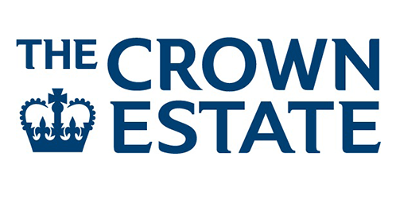The south west: the coast with the most
14/10/2016 | Alex B and Lauren T
It’s Thursday afternoon and the van is packed, 110 CITiZAN conference packs stuffed into re-useable tote bags are all sat in the back of the van ready to go. They are all stuffed with abstracts, CITiZAN scales, CITiZAN and National Trust postcards, and lots and lots of leaflets, all promoting the wonderful work which is undertaken in the south west by a large variety of organisations.This is all accompanied by the CITiZAN flags, banners and posters which all showcase the wonderful work that CITiZAN south west, south east and north have been doing over the past 18 months. There is nothing else we can do, we just hope that it runs smoothly and hope by the end of the conference, everyone knows the south west has the coast with the most.
On friday we head to Bristol, we cannot get into the venue until Saturday morning so it just leaves time for us to relax and spend time with the other CITiZAN teams and the chaps from the Thames Discovery Programme (TDP). Meeting some of the conference exhibitors and speakers after a few swift drinks and off we go to Za Za Bazaar (http://www.zazabazaar.com/), chosen by the south west due to its wide and varied cuisine!

ZaZa Bazaar in Bristol
We all felt fairly well fed with some of us traveling the world on one plate! After this, on discovery that there was a pub called ‘The Ostrich’ we took our very own Stephanie Ostrich (the projects lead) there for some excellent photo opportunities and a drink.
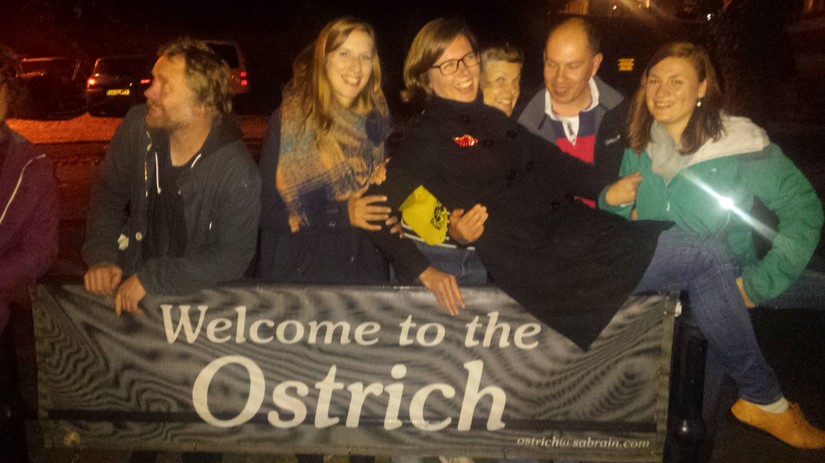
The Ostrich at the 'Ostrich'
Its finally Saturday 8th October 2016. After what seems like months and months of preparation the day has come. A slightly early start of a 7am breakfast left us all feeling slightly groggy but after a full english (of sorts) we were ready to go.
The ss Great Britain looks beautiful in all her splendour - with this rare opportunity to see her without lots of people crowded round her.

The bow of the ss Great Britain
All systems are go as we all rush to get everything ready. As always with the glorious British weather we are forecast rain so up goes the marque decorated with the CITiZAN appropriate bunting and flags.

Alex and Lauren from CITiZAN SW with Peter Murphy, one of the speakers, underneath the duly decorated marquee
The biggest fear to anyone organising an event is the fear that people will not show up, however we need not have worried, people streamed through the door to be welcomed by none other than our very own Lara and Megs.
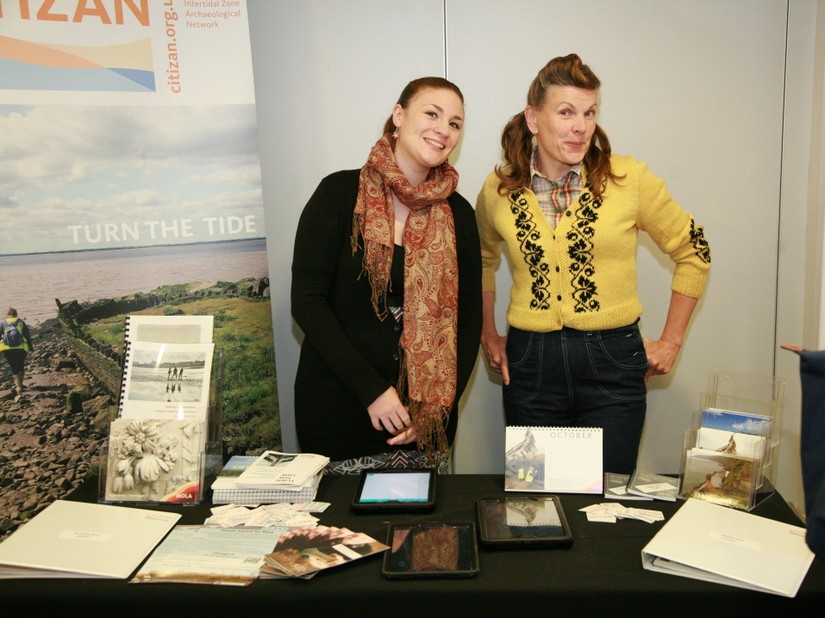
Megan from team north (L) and Lara from team south east putting on there best ‘welcome faces’ to sign everybody in.
After lots of seemingly controlled rushing around we were ready. Stephanie opened the conference with a welcome address that spoke about how important the recognition of the threats to intertidal archaeology were and how over the next eight speakers we were going to find out about this threat along the very dynamic coastline of the south west.
First up is Gustav Milne from the TDP speaking about Brunel’s sister ship to the ss Great Britain, the ss Great Eastern. The largest ship to be constructed she had to be launched side on into the Thames as to not get stuck on the river banks. However, the launch did not go to plan as the launch slipway was not entirely equal and even, as such her launch was not the graceful movement into the water but a spectacle, watched by the world's press, as she was heaved using metal chains into the waters of the Thames.

Gustav Milne, our first speaker, discussing the SS Great Britain
Following Gustav Milne, is Peter Murphy. Previously head of coastal response at English Heritage he now heads up the coastal monitoring group in the Chichester and District Archaeology Society. Speaking about Medmerry, an area on Selsey Bill in West Sussex where a managed realignment scheme is changing the scouring patterns of the tides and revealing everything from prehistoric burnt mounds to 19th/20th century old farm wells. CDAS have been monitoring this area and recording all that has been found, a great example of what CITiZAN hopes to achieve on a national scale.

Peter Murphy talking about the problem of coastal scour
After a quick refuel we were back on board and Gary Marshall bought us to the Isle of Wight. As the National Trust Archaeologist for the Island he has been watching parts of the Island disappear for the past twenty years. Using a case study of Tennyson Down, a recently identified and recorded enclosure site which has partially been destroyed by cliff collapse.

Gary Marshall, archaeologist for the south east inc. Isle of Wight
Next we moved onto something a little further afield, the ALeRT project in France has been running for the past four years. Bringing together volunteers, archaeologists, climatologists and scientists all to work on recording the archaeology and heritage of north western France before it is lost to the tides. During this paper we can see the benefits of a project such as CITiZAN a little further into the future.

Dr Marie-Yvanne Daire, who cll the way from France to speak about the fascinating work she is undertaking as part of the ALeRT project
Returning to England, our Key Note speaker Prof. Martin Bell, drops us into the Severn Estuary. Over the past twenty years Martin has been investigating the archaeology of the Severn Estuary, having a particular interest in the rapid recording of the footprints which can be seen on the foreshore if you are in the right place at the right time. Martin also showed some of the work he has carried out along the Severn foreshore in the past including some exposures of wonderful submerged forests.

Prof. Martin Bell from Reading University speaking about the work he has carried out in the Severn Estuary and the importance of involving the community in an environment which is so dynamic and changeable as the Severn.
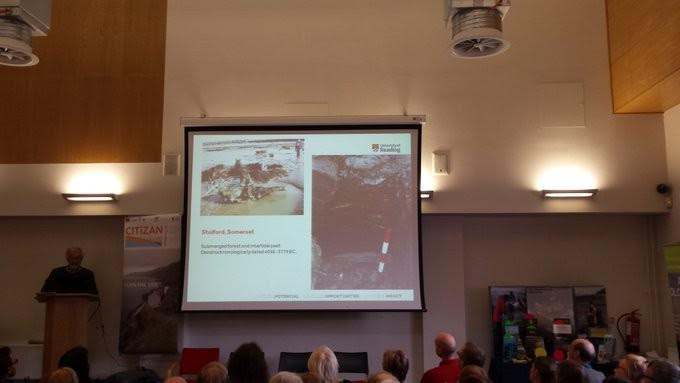
Submerged forests are ‘Archaeology at its most sexy’ according to Alex Bellisario of CITiZAN SW and Andy Sherman or Team North.
Already it is lunch break - and what a splendid selection of food the ss Great Britain has laid on for us. We would appear to have been incredibly lucky with the weather and the rain has held - even some blue sky is sneaking through.

All of our lovely volunteers grabbing lunch for the amazing buffet that the ss Great Britian put on for the conference
Gathering everybody back after lunch was a good achievement, and once the last few were peeled away from the underside of the ss Great Britain we could begin again. We first heard from Dr Michael Grant, discussing the north Cornwall and north Devon rapid coastal zone assessment surveys which are being undertaken by COARS/University of Southampton. Discussing the challenges of analysing a large stretch of coastline to predict the potential of unrecorded archaeology and the threat to known archaeology on different geologies.

Dr Michael Grant speaking about the North Cornwall and North Devon Rapid Coastal Zone Assessment Survey
Flying to the very south westerly part of the United Kingdom we land on England’s only archipelago, the Isles of Scilly. Charlie Johns has been heading up the the community archaeology group on the Islands who have been monitoring the coastal archaeology of the Isles of Scilly since the 00s when a shorewatch programme was established in response to the particularly high threat of coastal archaeological loss. Today, the group work to record, monitor and maintain the monuments that litter the Isles of Scilly.
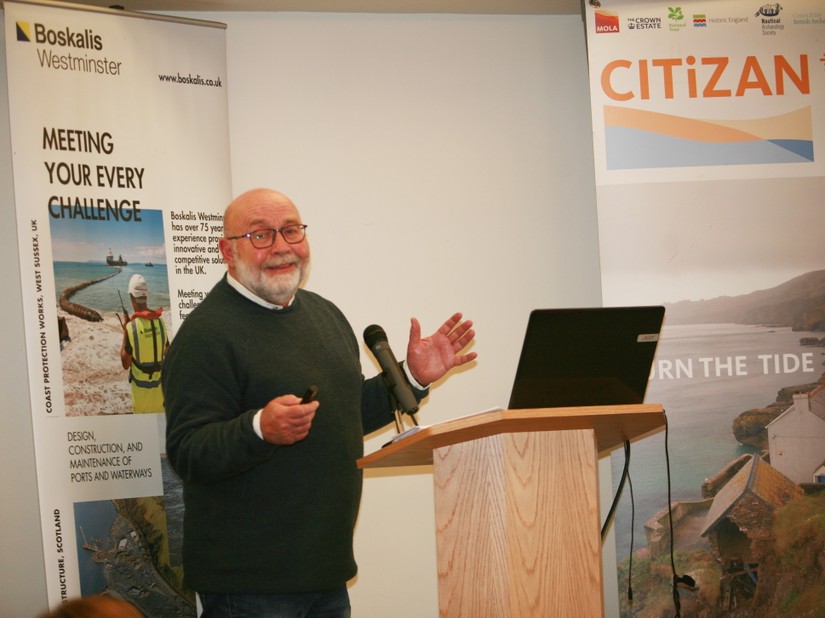
Charlie Johns speaking about the wonderful work of the Isles of Scilly Community Archaeology Group
A quick refreshment break gave us from team South West 15 minutes to think about the fact they were due to speak last!
After the last break of the day James Gossip brings us to the Lizard Peninsula in Cornwall. A beautiful and remote part of the south west, where a new archaeology group founded in 2014 has embraced coastal monitoring and the CITiZAN project. Discussing some of the sites they have visited as part of this new group, they include a Roman saltern which has been significantly damaged by coastal erosion and all that remains is likely to be lost over the next couple of years. James spoke about the necessity to record and investigate this site using modern techniques which could be interpreted with the excavation record of 1960s.

James Gossip speaking about the Menage Archaeology Group
Finally rounding up the south west coast with the most was us from team south west. Finishing off the conference we outlined all of the work we had done over the past 18 months, the miles we have travelled and the people we have trained. With 18 training events and 207 people trained and over 40 Outreach events where we have engaged upwards of 1600 people we have been very busy bees!
The conference was a splendid success, a great venue and a great lineup of speakers and exhibitors. We had stands from the Nautical Archaeology Society, the Council for British Archaeology, Thames Discovery Programme, National Trust, Severn Estuary Levels Research Committee, Plymouth Coastal Observatory, Maritime Archaeology Trust, ArchDrone, Boskalis and the Marine Antiquities Scheme. Thank you to everyone who came and made this day wonderful for us!

Our wonderful speakers (L-R) Chole Martin, Marie-Yvanne Daire (both ALeRT), James Gossip (CAU/Menage Archaeology Group), Prof. Martin Bell (Reading University), Charlie Johns (CAU/Isles of Scilly Community Archaeology Group), Peter Murphy (Chichester and District Archaeology Society), Gary Marshall (National Trust) and Dr Michael Grant (COARS/University of Southampton)

The CITiZAN Team!
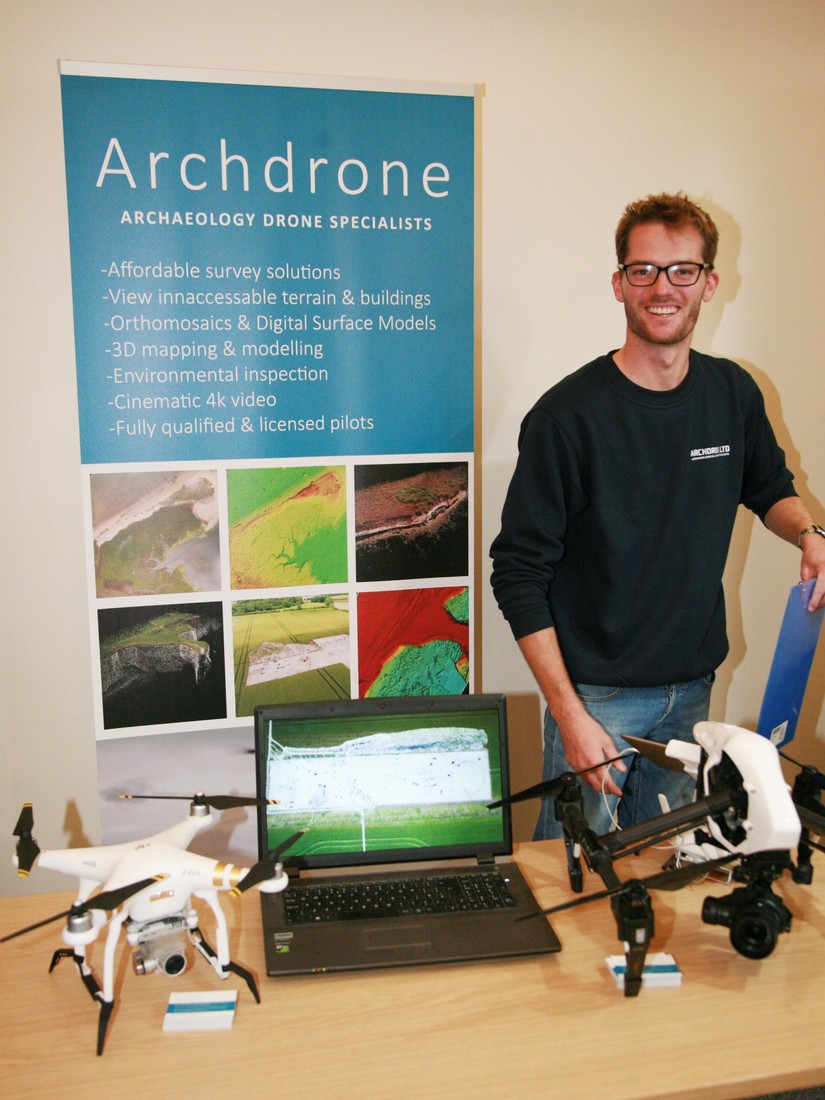
Nick from ArchDrone

The Thames Discovery Programme and National Trust stands

Boskalis our conference supporters

Josh from the Plymouth Coastal Observatory

Suzie from MOLA and Maddy from the Marine Antiquities Scheme looking at the new MAS app!
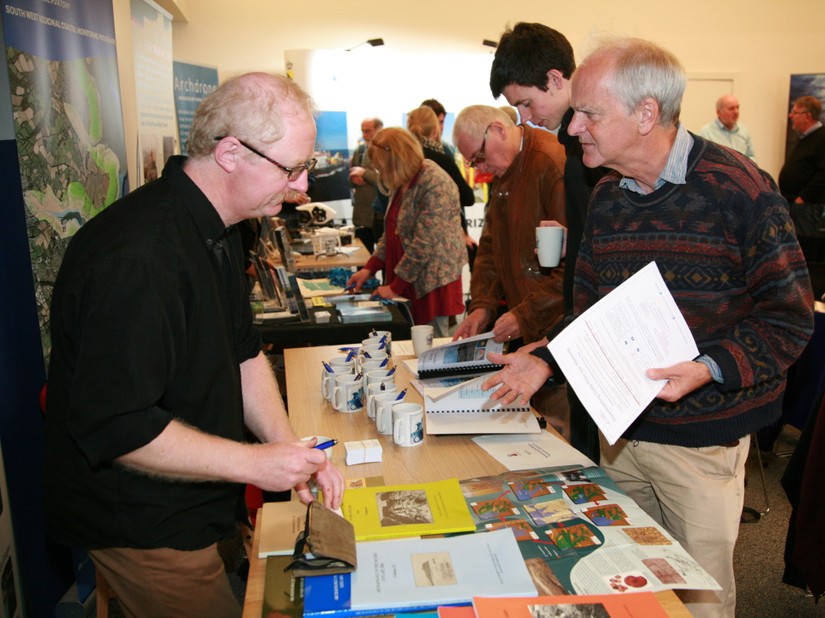
Richard selling some of the last hard copies of the Severn Estuary Levels Research Committee before they go digital!

Mark from the Nautical Archaeology Society chatting with one of our attendees
We look forward to our third annual conference - Turn the Tide III in London with our South East Team and the Thames Discovery Programme!








